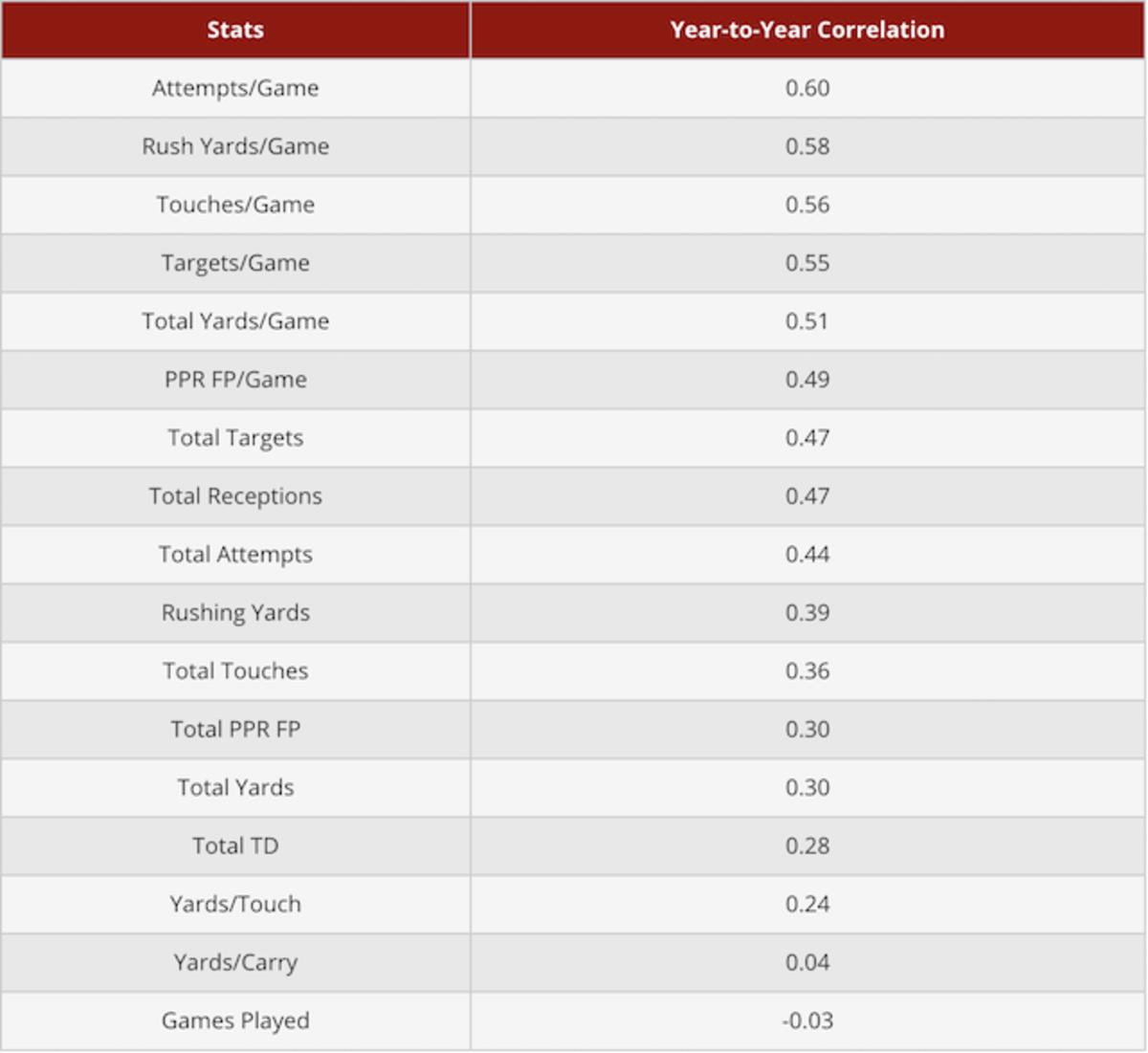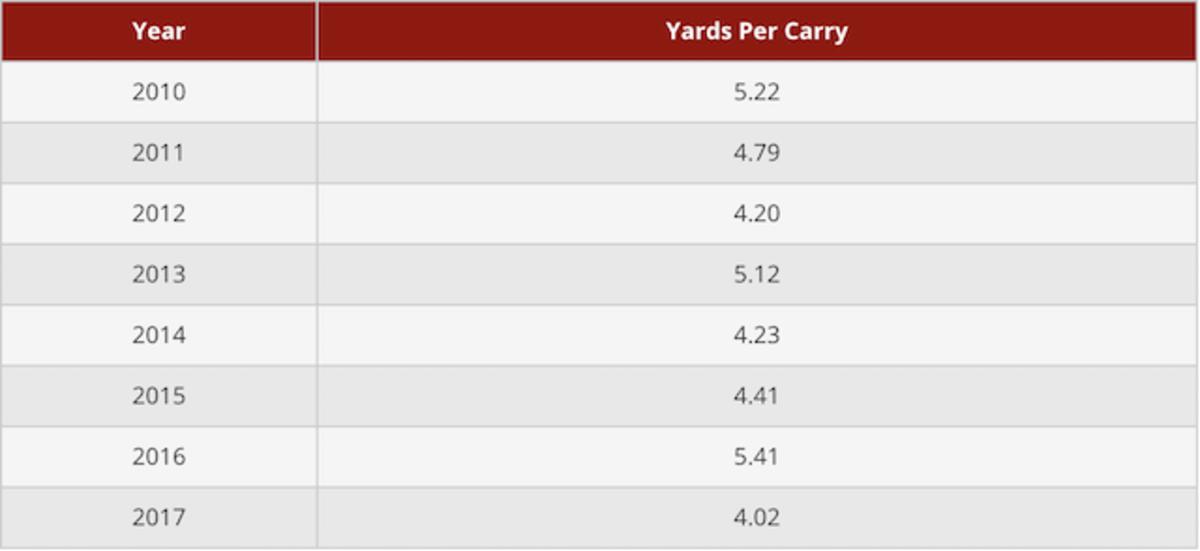The Most Predictable Running Back Stats

This study will shed light on which commonly cited previous-year stats for running backs are reliable indicators of future performance, and which stats can be misleading.

The Methodology
In order to keep this study somewhat controlled, only running backs who saw at least 100 touches and remained on the same team in consecutive years since 2010 were considered. Many variables change from year to year in the NFL, and a study like this can be inherently sensitive to outliers. Eliminating something as drastic as a team change should remove some noise. One hundred touches is an arbitrary cutoff, but an average of 12 or more touches per game over half of a season should be sufficient enough of a sample to reflect a player's true performance level.
This methodology offers us a sample of 185 instances in which a running back met the volume threshold in consecutive seasons for the same team.
The following table gives the correlations for 17 statistics that are commonly cited when trying to project a running back's upcoming season:
Year-to-Year Statistical Correlations for RBs on Same Team in Consecutive Seasons (since 2010, min. 100 touches)

The Most Predictable Wide Receiver Stats
As with the other positions in this series, it's no surprise per-game stats have the strongest year-to-year correlations when you consider they simply represent a player's average performance. On the other hand, volume stats will fluctuate if a player misses a handful of games, and the number of games a player plays has virtually no correlation from one year to the next.
Running Backs Need the Ball
A running back’s per-game usage is the most reliable data when trying to project his current season based on the previous year's stats. Running back production is mostly volume-driven—the year-to-year correlation for yards and fantasy scoring is only moderately strong. PPR scoring somewhat mitigates the effect of touchdowns on bottom-line fantasy scoring, so it makes sense a running back can have a consistent year-to-year fantasy output despite almost no correlation in touchdowns from one year to the next.
Although there is some correlation in per-game production overall from year to year, the correlation isn’t so strong that we can look at the previous season and think that a running back can easily replicate his numbers.
The Most Predictable Quarterback Stats
4for4's Draft Analyzer provides live analysis during your draft to help you optimize every pick and every position. Sign up for a subscription with 4for4 using promo code SI10 to get a 10% discount.
Per-Play Efficiency Can Fool You
The unreliability of efficiency metrics—yards per touch and yards per carry—is the biggest data point to note.
Touchdowns are generally known to be the most volatile stat (and therefore the hardest to predict), but we should also exercise caution when using a back's previous-year per-touch data as a reference point for projections.
Consider LeSean McCoy—one of the more consistent fantasy running backs in recent history—and his yearly yards per carry from 2010 through 2017:
LeSean McCoy Year-to-Year Yards Per Carry

McCoy's range of outcomes may seem relatively small, but assuming a 300-carry season, the difference between McCoy’s best and worst yards per touch figure would result in a gap of roughly 400 yards. Even the most consistent fantasy scorers are susceptible to large swings in efficiency from season to season.
Efficiency metrics, as I've mentioned in my previous work, are perhaps best used to compare a player's end-of-season numbers to the league average, or to his individual average, if the sample is large enough. You can then decide to what extent regression to the mean should be expected.
Fantasy Football 2018: Running Back Primer
The Bottom Line
When analyzing the previous season's running back stats, here's what to keep in mind:
The most predictable year-to-year stats for running backs are their usage numbers (touches, rushing attempts, targets, receptions).
A running back's yardage is much more likely to carry over from year to year than his touchdowns.
A running back's previous-year efficiency is a poor predictor of his future efficiency. Don't put much stock into yards per touch and yards per carry.
